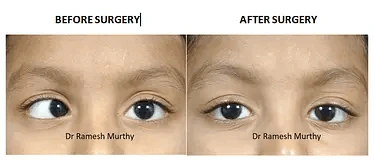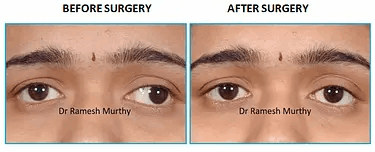

Squint, medically known as strabismus, is a condition where the eyes do not align properly. While one eye may focus normally, the other may turn inward (convergent), outward (divergent), upward, or downward. This misalignment can affect both vision and appearance.
One of the major risks associated with squint—especially in children—is amblyopia, or lazy eye, a condition where the brain starts ignoring input from the misaligned eye. Over time, this leads to reduced vision in one eye, even if the eye itself is structurally normal.
Loss of Binocularity: The brain struggles to merge images from both eyes, affecting depth perception and spatial awareness.
Impaired Coordination: Poor eye coordination may hinder reading, writing, and sports performance.
Cosmetic Concerns: Misaligned eyes can impact a child’s confidence and social interactions.
Reduced 3D Vision (Stereopsis): Early-onset squint can cause long-term loss of three-dimensional vision.
Early diagnosis and treatment are essential—especially in children. Convergent squints (esotropia) are often detected in early childhood and can sometimes be corrected with prescription glasses. If left untreated, there is a high risk of developing amblyopia and losing binocular vision permanently.
Timely intervention not only helps preserve visual development but also prevents cosmetic and psychological effects. In adults, squint correction can lead to notable improvements in binocular vision, visual comfort, and overall eye alignment.
For expert evaluation and surgical precision, many families trust the Best Squint Surgeon in Pune, known for combining advanced techniques with a patient-centric approach for optimal results.
Glasses – Often effective for refractive types of squint, particularly in children.
Eye Patching – Used in amblyopia to strengthen the weaker eye by covering the dominant eye.
Vision Therapy – Exercises designed to improve coordination and strengthen visual skills.
Surgery – Realigns eye muscles to correct the squint. Modern procedures are minimally invasive, safe, and allow patients to resume normal activities within 24 hours in most cases.
Exotropia (Divergent Squint): One eye turns outward.
Esotropia (Convergent Squint): One eye turns inward—most common in children.
Hypertropia: One eye turns upward.
Hypotropia: One eye turns downward.
Intermittent Squint: Appears occasionally but may worsen without treatment.
The 2 images from each eye --> confusion --> suppression of one eye --> lazy eye (amblyopia)
It is usually done under general anesthesia, so it's a painless experience. However, post-operative discomfort is usually felt by patients which can be easily managed by painkillers, antibiotics, and regular follow-up with the doctor.
The 2 images from each eye --> double vision
Yes, lazy eye or amblyopia needs to be treated before squint surgery is undertaken for good long term outcome.
Depending on the nature of the squint the various modalities available are
Recovery from surgery is very fast and normal activities can be resumed the day after surgery.
No head bath should be taken for a week after surgery and swimming should be avoided for 2 months. Avoid splashing water into your eyes. One can watch TV and read books normally without undue strain after surgery.
Squint surgery is generally very successful. Every patient is different, and surgery is planned for everyone considering various factors with the objective of a good long-term outcome. Chances of recurrence are very less with appropriate modification of technique.
Although surgical treatments for squint can be done at any point in a patient's lifetime. However, the literature recommends 6 years as the earliest age for squint surgery but it's best to consult with your ophthalmologist to know the exact squint surgery age limit.
© 2025. Axis Eye Clinic | All Rights Reserved | Created & Crafted by Itorix Infotech